
There are few problems as enduring and annoying as that of your browser homepage or search engine changing without your permission. You try searching through Google but end up being redirected to Yahoo, or your homepage suddenly becomes some dodgy knockoff that you’ve never heard of. There are various reasons your search engine and homepage keep changing – from annoying extensions to sneaky “opt out” checkboxes in software or malware. We cover all the fixes for you here.
Good to know: learn all about browser cookies and how they affect your privacy.
1. Manually Change the Search Engine
If your search engine or homepage keeps changing to Yahoo (or really any other search engine), the most benign explanation is that at some point you accidentally opted in to change your search engine (usually through third-party software that has a crafty checkbox in the installer asking if you’d like to opt out of changing your search engine, which means by default, they do change your search engine). It can be quite annoying.
If that’s happened, it could just be a case of manually changing your search engine back to the option you had initially chosen.
Note: the issues of the search engine continually changing has been reported to manifest mostly on PC – and not mobile devices. This guide covers solutions for the issue occurring on a computer.
Google Chrome
In Chrome, click the three dots in the top right, and go to Settings -> Search engine. Change the search engine via the drop-down menu on the right.
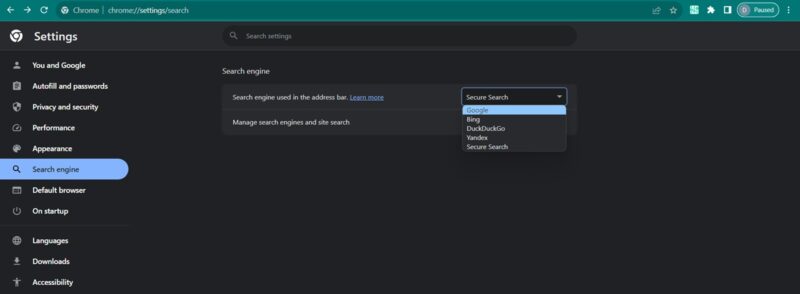
You can also change the homepage by going to the On startup section, selecting Open a specific page or set of pages, and adding a page leading to your preferred search engine.
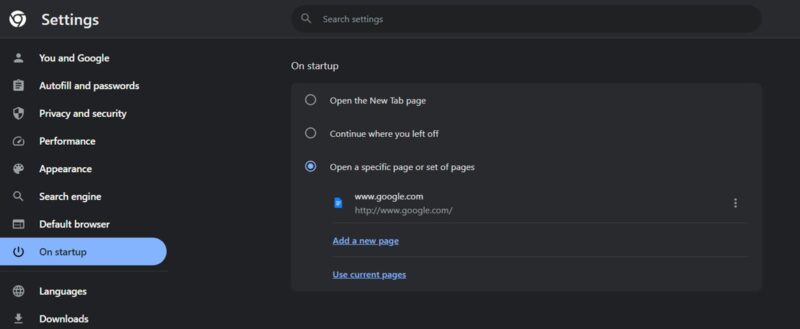
Microsoft Edge
If you’re an Edge user, click the three dots in the top right, then navigate to Settings -> Privacy, search, and services. Scroll to the bottom, and click Address bar and search.
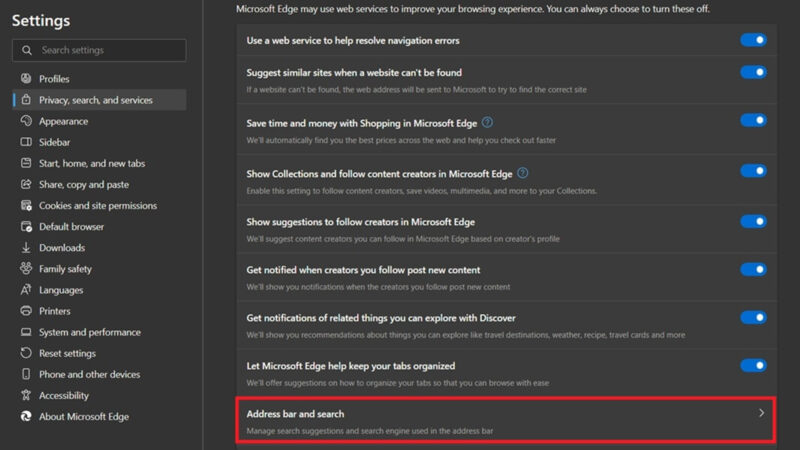
Change the Search engine used in the address bar drop-down.
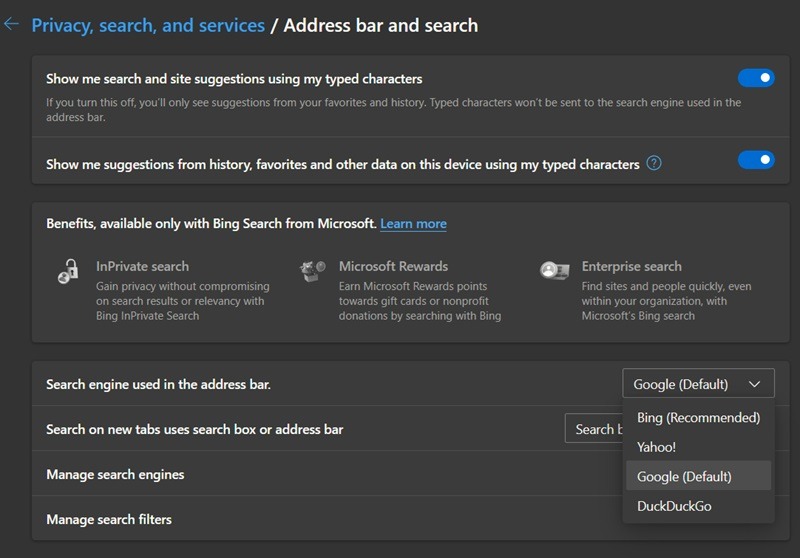
Click Start, home, and new tabs on the left, and add your preferred search engine page.

Mozilla Firefox
To restore your previous search engine, click the three-line icon in the top-right corner of Firefox, then go to Settings -> Search. Switch Default Search Engine to the one you want to use.
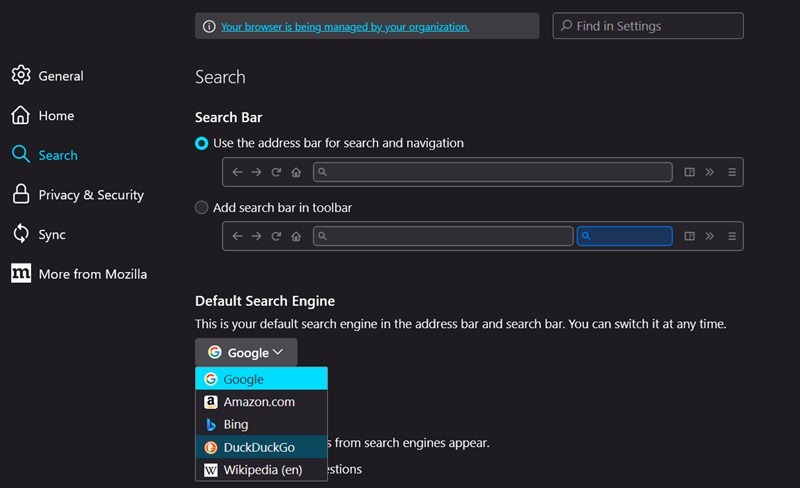
To fix your Firefox homepage, click Home in the left side pane, then in the Homepage and new windows drop-down menu, switch to what you want.
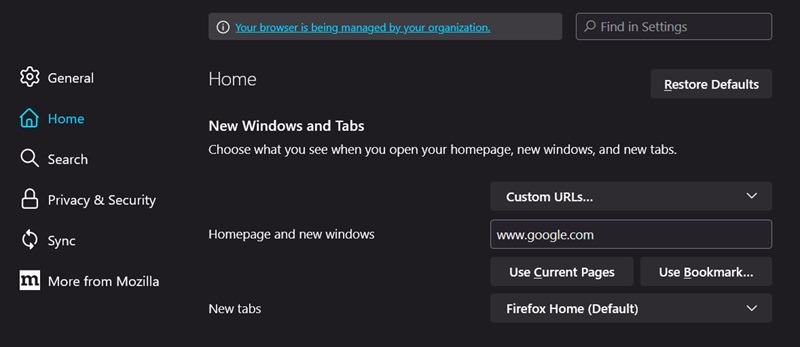
Safari
If you’re using Safari on a Mac computer, go to Safari -> Settings -> Search. Change the search engine via the drop-down menu.
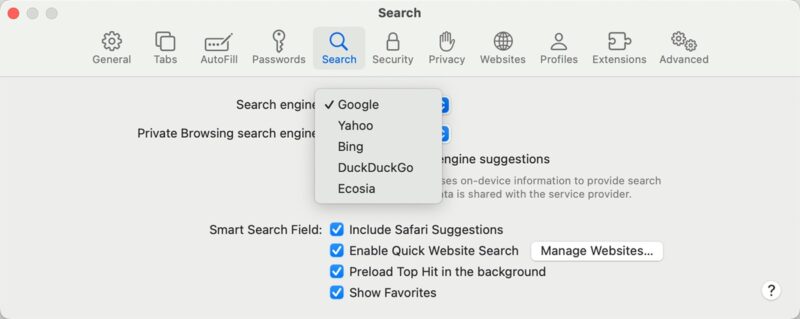
If you wish to change Safari’s homepage, click on General at the top, then enter your webpage address in the Homepage field.
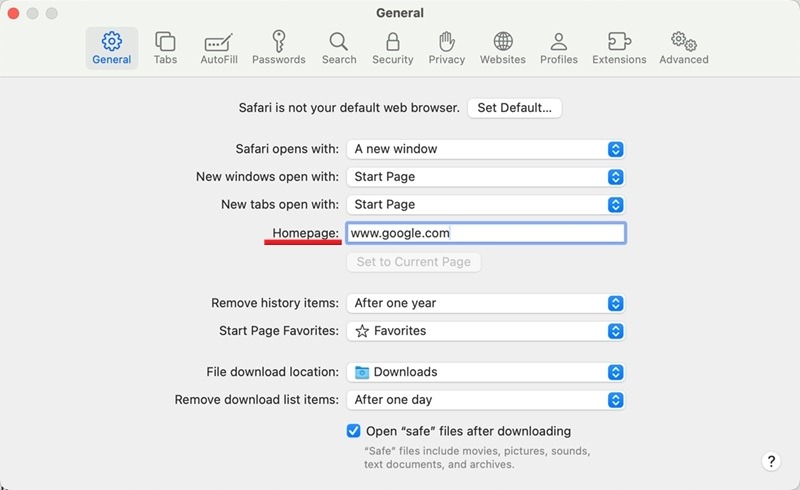
Tip: check out how to safely test the efficacy of your antivirus against real malware.
2. Scan for Viruses
If your homepage or search engine keeps changing, your browser may be affected by a browser hijacker virus. At some point, you may have clicked a fake “update” pop-up telling you to do things like update your Flash Player or browser. You may have also accessed a shady website by mistake.
This type of virus is capable of altering your browser settings without your knowledge or consent. It works by hooking a redirect link into your browser, changing your search engine, even after you change it back. The creators of the virus profit from any searches you make using that search engine and have access to your browsing data.
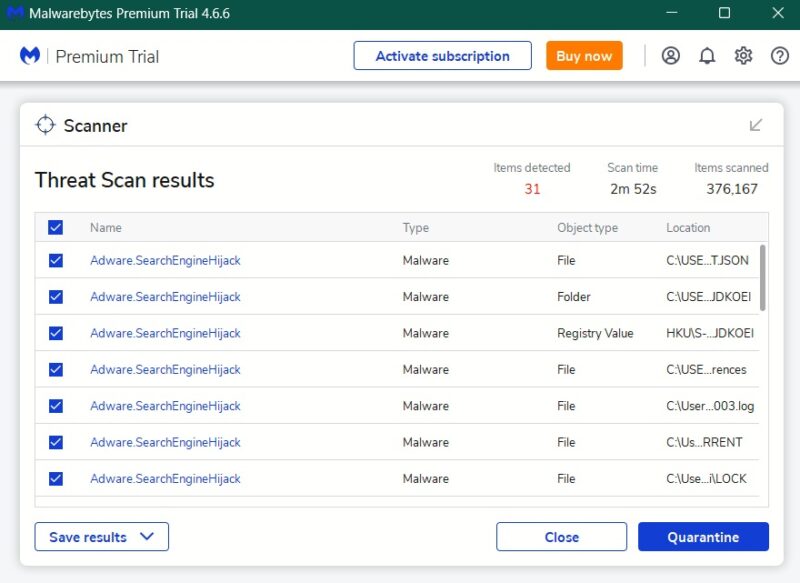
First, run an antivirus scan. If your built-in OS antivirus (we have you covered if you need to know how to run a scan with Windows Security) doesn’t detect it, try a third-party antivirus like Malwarebytes, Avast, or Bitdefender, to see if it roots out the problem. This is the method that helped us identify the virus infestation on our PC (as seen in the screenshot above). The antivirus program will allow you to quarantine or remove the threats.
If the problem persists even after the scan, continue with some of the other solutions.
3. Uninstall Relevant Software
There’s a lot of software that comes with accompanying bloatware, which sometimes sneaks onto your PC when you fail to uncheck a box while installing the software you do want – sometimes even without permission.
This software hooks into your browser and force-redirects your homepage, even if you change it back.
Find this software on your Windows PC by right-clicking the Start menu and navigating to Settings -> Apps -> Installed Apps.
On Mac, click the Finder icon in the Dock, then click Applications in the Finder sidebar.
Delete apps with any of the following (or similar) names:
- Search Provided by Yahoo
- Web Companion
- PDFPoof
- SearchAd
- ProMediaConverter
- PDFOnline
- WebDiscover
Generally, uninstall any app you don’t recall installing on your PC. If you’re unsure, check the software’s official page to jog your memory.
Tip: knowing how to download and save a Chrome extension in CRX format could be useful.
4. Remove Faulty Browser Extensions
If you’re using extensions or add-ons in your browser, you may have inadvertently installed a malicious one, which is now messing with your settings. To figure out whether that’s the case, the easiest solution is to disable all extensions, then enable them one by one.
Chrome
Click the three dots in the upper right, and select Extensions -> Manage extensions.
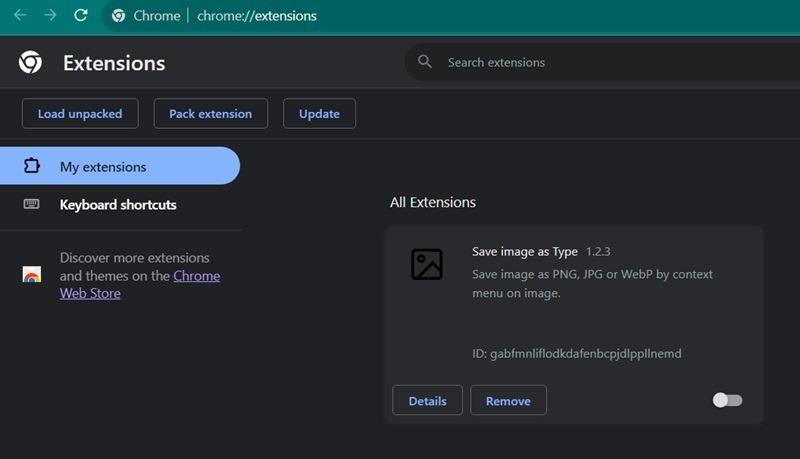
With all your extensions listed, click the toggle underneath to disable the extension. Do that for each extension. Relaunch the browser and check whether the search engine is the one you prefer. If everything works as intended, start turning the extensions back on one by one until the issue manifests again. This will lead you to your culprit.
Edge
Click on the three dots in the upper right, and opt for Extensions. Click on the Manage extensions option in the pop-up.
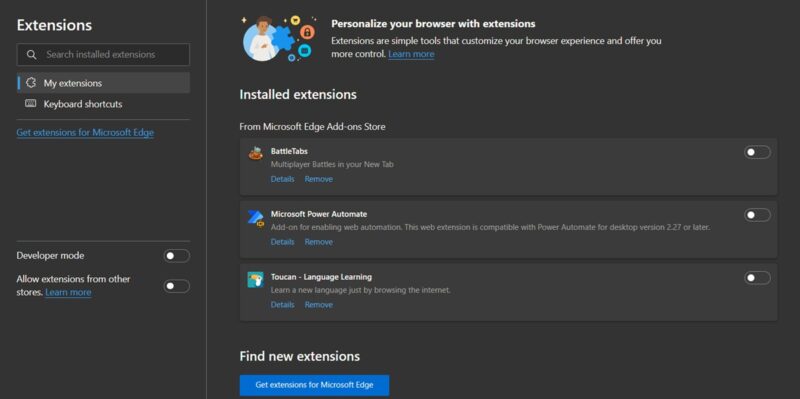
Turn off all extensions, and reboot your browser to check the result.
Firefox
Press on the hamburger menu in the right corner, and select Add-ons and themes. Turn off all add-ons by clicking their respective toggles, and restart your browser.
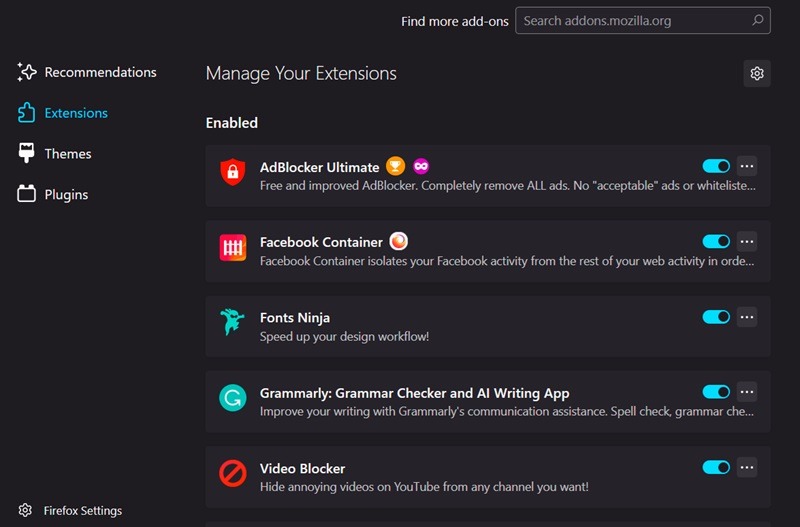
Safari
On Mac, go to Safari -> Settings, and click Extensions at the top. Disable extensions by deselecting the checkboxes next to each.
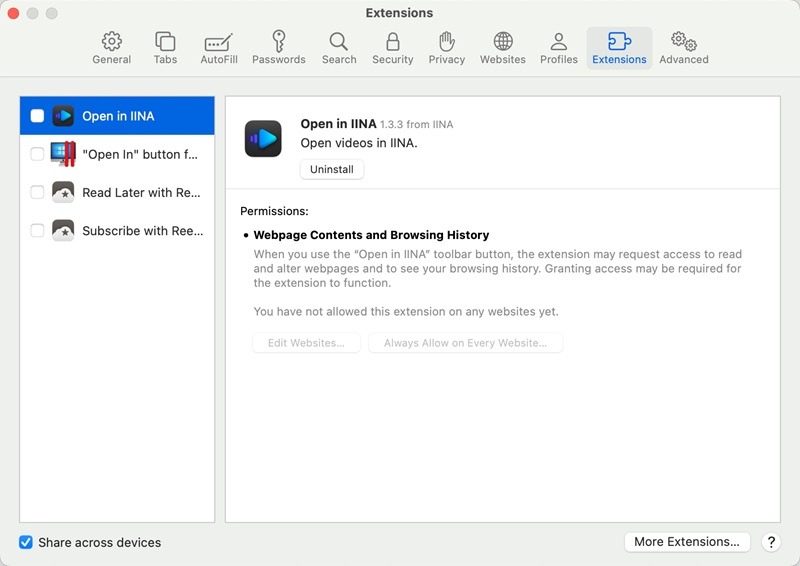
5. Reset Your Browser
If nothing has worked so far, the final solution is to reset your browser. Doing this will remove your browser’s settings and shortcuts, as well as disable extensions and delete cookies and other temporary site data. Bookmarks, history, and saved passwords won’t be affected.
Chrome
Go to Settings -> Reset Settings, and click Restore settings to their original defaults. Press on Reset Settings in the pop-up to initiate the process.
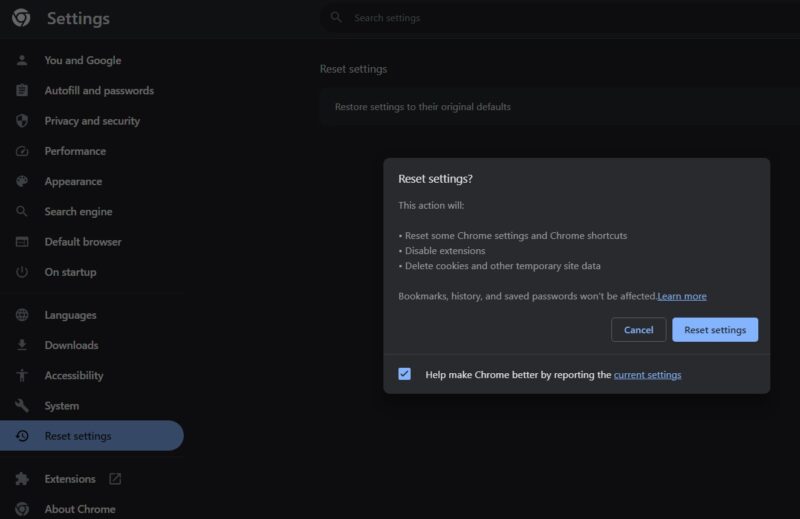
Edge
In Edge, go to Settings -> Reset Settings -> Restore settings to their default values. Press Reset in the pop-up window to confirm your choice.
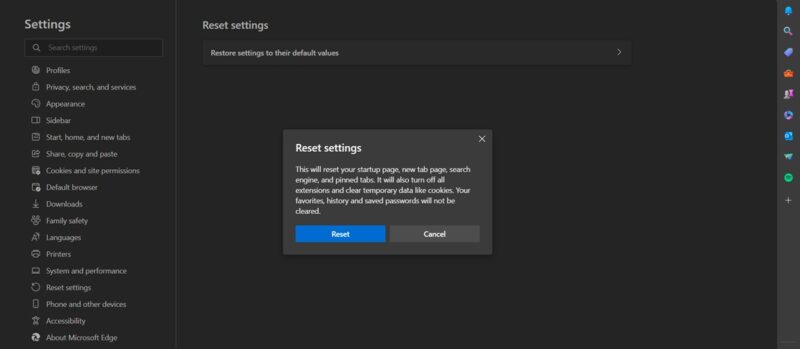
Firefox
Click the hamburger icon in the right corner, and select Help -> More troubleshooting information. Click the Refresh Firefox button on the right, then hit the Refresh Firefox button to start the process.

Safari
It takes a few extra steps to reset the Safari browser. Navigate to Safari -> Preferences -> Privacy. Click the Manage Website Data button, then click Remove All to delete all stored website data, cookies included.
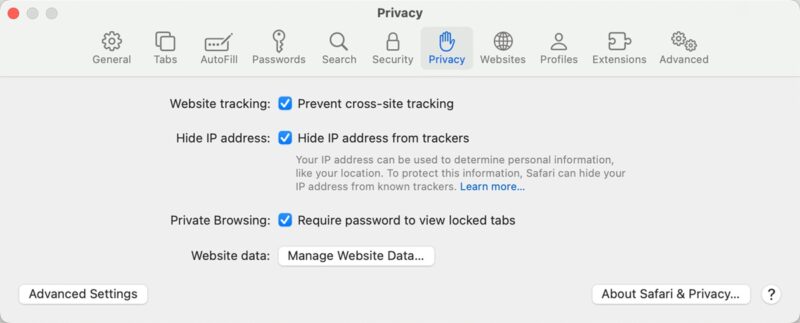
Go back to Preferences -> Advanced, and tick Show Develop menu in menu bar.
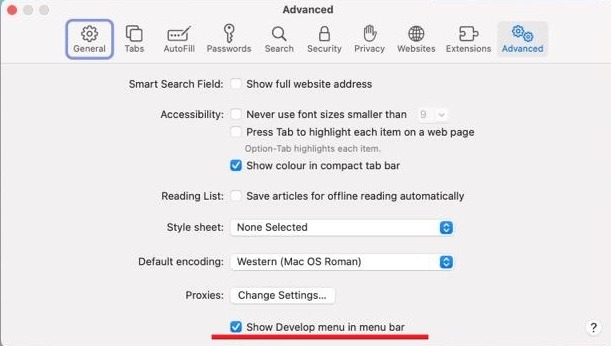
From the menu bar, go to Develop -> Empty Caches.
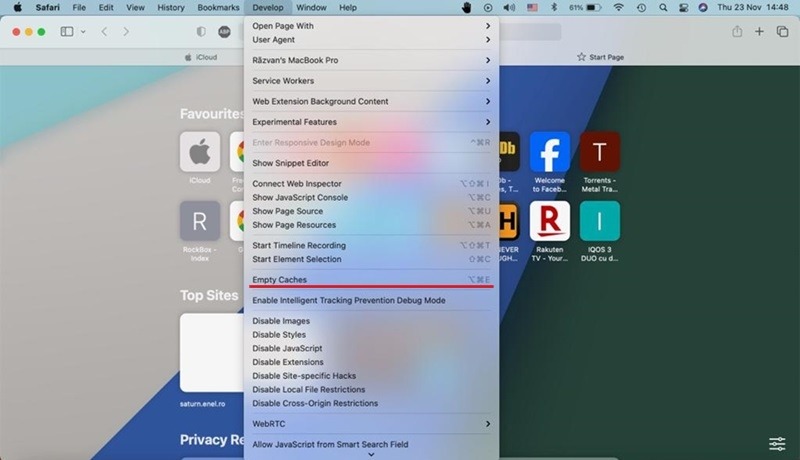
FYI: did you know that you can disable web page auto-refresh in your browser? Follow this guide.
Acting quickly once you spot a browser hijacker on your PC will prevent the malware from spreading on your computer. For a more secure experience while browsing, check out these Chrome security and privacy extensions. It may also be helpful to learn how to enable Strict Site Isolation in Chrome to enhance your browser’s defense against certain types of cyber threats.
Image credit: Freepik. All screenshots by Alexandra Arici.
Our latest tutorials delivered straight to your inbox